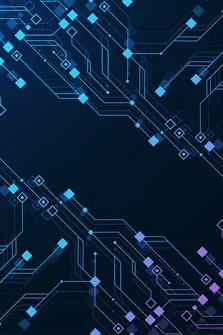<p class="MsoBodyText">Derivatives have a unique relationship to risk. The derivatives market, at its heart, facilitates the transfer to different parties of the risks and rewards associated with commercial or financial outcomes<sup>[1]</sup>. As financial instruments, however, derivatives can be complex and abstract – qualities that can lead to mishandling and misuse, with systemically catastrophic results. Derivatives have, to varying degrees, been behind some of the biggest booms and busts of recent years – notably the crash of 2008.</p>
<p class="MsoBodyText">Since this last upheaval, regulators have focused much of their attention on restructuring the derivatives market to make it less risky, and to reduce the systemic effects of speculation. Notable among their approaches has been the introduction of Central Counterparty (CCP) clearing houses to prevent dangerous chain reactions of defaults throughout interlinked transaction networks. </p>
<p class="MsoBodyText">But regulators’ attempts to rein in the derivatives market have not restructured the market in the way they had hoped. The fundamental nature and function of derivatives hasn’t changed – instead the regulators have made derivatives more expensive and harder to use. Meanwhile, Financial Institutions (FIs) still want to make money, and will always seek to develop new ways of doing so.</p>
<h2>Enter technology – and innovation</h2>
<p class="MsoBodyText">Technology has always been an important part of the overall derivatives market structure – providing, among other things, the raw computational power required to process complex derivatives and drive electronic exchanges. During the latest waves of post-crisis regulation, it has also played a crucial part in derivatives markets generally, helping FIs achieve regulatory compliance and, through successive waves of innovation, provided the tools for FIs to maximize their profits.</p>
<p class="MsoBodyText">These latest waves of innovation – including the emergence of algorithmic and High-Frequency Trading (HFT), electronic exchanges and, increasingly, the use of Artificial Intelligence (AI) – are proving a real boon to FIs. However, despite the regulators’ best efforts, they have also helped to preserve the underlying structure of the derivatives market itself, distracting attention away from the need to address longstanding systemic risks.</p>
<p class="MsoBodyText">Indeed, while the derivatives market and its underlying structure and processes have always been driven and enabled by advances in technology, recent developments, rather than stabilizing this structure, could ultimately undermine it by introducing whole new dimensions of risk.</p>
<table>
<tbody>
<tr>
<td>
<div>
<p><strong>The importance of understanding</strong></p>
<p class="MsoBodyText">The risks baked into the derivatives markets can both be alleviated by technology and exacerbated by it. In one challenging scenario, for example, mathematically astute graduates, each seeking to outdo the others, would develop increasingly sophisticated trading algorithms and systems, supported by third parties who distribute and monetize their work. In this situation, key players may well lack a cohesive understanding of the market as a whole and, without an awareness of the attendant risks, could find their work inadvertently impacting resilience.</p>
<p class="MsoBodyText">Similarly, the vast numbers of algorithms produced by quant developers could find their way into the market, used by people who don’t understand how they work. Indeed, this conceptual gap between the development and implementation of algorithms can be compared in many ways to the lack of understanding of complex instruments that lay at the heart of the 2008 financial crisis.</p>
</div>
</td>
</tr>
</tbody>
</table>
<p>To mitigate the risks and avoid a repeat of past crashes, we believe, the key will be to match technology with technology – algorithm with algorithm, and sophisticated statistical processes with equally sophisticated tools and systems. Ultimately, in an ideal world, we believe technology could be used to realign the derivative market’s relationship with risk, so that the system remains stable while allowing institutions to make money. This would therefore mean matching innovation with innovation – although this in itself could aggravate tensions within the system, as it would mean having to regulate and monitor unbridled technological development.</p>
<div class="WordSection1">
<p class="MsoBodyText">We believe that technology vendors have a leading role to play here, developing compatible systems and tools for institutions and regulators that could help to stabilize the market. For their part, regulators also need to rethink their role in the scenario – shifting from passive surveillance to more active involvement – and address this challenge head on. In short, by collaborating, vendors, regulators and other interested parties can use technology to drive much needed stability back into the global derivatives market.</p>
<p><sup><em>1 </em><em>Because a core theme of this report is the structural relationship between the derivatives market and risk, we discuss derivatives as a general set of financial instruments. However, market and product structures can differ widely within the derivatives family, creating nuances that may influence markets and technology needs in different ways.</em></sup></p>
</div>
<p class="MsoBodyText"> </p>
Only users who have a paid subscription or are part of a corporate subscription are able to print or copy content.
To access these options, along with all other subscription benefits, please contact info@risk.net or view our subscription options here: http://subscriptions.risk.net/subscribe
You are currently unable to print this content. Please contact info@chartis-research.com to find out more.
You are currently unable to copy this content. Please contact info@chartis-research.com to find out more.
Copyright Infopro Digital Limited. All rights reserved.
As outlined in our terms and conditions, https://www.infopro-digital.com/terms-and-conditions/subscriptions/ (point 2.4), printing is limited to a single copy.
If you would like to purchase additional rights please email info@chartis-research.com
Copyright Infopro Digital Limited. All rights reserved.
You may share this content using our article tools. As outlined in our terms and conditions, https://www.infopro-digital.com/terms-and-conditions/subscriptions/ (clause 2.4), an Authorised User may only make one copy of the materials for their own personal use. You must also comply with the restrictions in clause 2.5.
If you would like to purchase additional rights please email info@chartis-research.com





